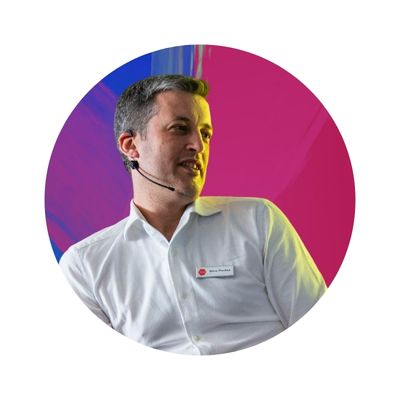The Future of Hybrid International Education

Long before Covid-19 forced institutions to teach over the computer screen, recorded lectures and online assessment methods were already fixtures of many courses.
International students now seek more choice and flexibility for where and when they study – they expect to be able to access higher-quality overseas education from any location, at any time, any way they want.
What is HyFlex learning?
The Hybrid Flexible (HyFlex) model is an instructional programme that combines both face-to-face and online teaching. The courses are fixed by the instructor; however, students have the choice of learning in different modalities at the point of learning (online or remotely). Fundamentally students can choose how to engage with the material in in a way that best suits their learning style but, no matter how they choose to participate, they must all have equal access to course materials, lecturers, and their peers.
An example of HyFlex would be as follows: a student may want to undertake a pathway programme at a study centre local to them – with a mix of online and in-person classes – they might then decide to enrol on a degree course at a UK university. HyFlex would allow them to complete the first semester of their degree online in their home country, before travelling to the UK to complete it.
The Hyflex model therefore allows for students to prepare for their degrees at home, whilst not have to spend money on overseas living costs.
The evolution of HyFlex
The HyFlex teaching model is quite like a blended classroom environment – namely a classroom with added technology to facilitate remote teaching. The major difference is that HyFlex also offers full asynchronous access to course content. This allows the student true autonomy over where, when, and how they engage with their course, making study more accessible and inclusive.
Any institution looking to adopt the Hyflex approach to learning will inevitably tread the same path. Normally, those starting out arrive at point A: often a basic setup that allows for a video link between classroom and student but there is no integration and lectures won’t be automatically uploaded to a platform. Since the course content cannot be accessed asynchronously, this early stage isn’t considered a ‘true’ HyFlex model.
If point A is the start of the HyFlex journey, point B is the desired destination. An institution that has arrived at point B will have all the necessary digital infrastructure to deliver a course using a variety of learning modes without privileging one mode over another. Classrooms are kitted out with live capture capabilities, lecturer tracking software and studio-grade microphones.
This is married with a fully integrated Learning Management Platform, where lectures can be automatically uploaded and accessed asynchronously. Furthermore, live chat rooms and video link allow students direct contact with their instructors and peers from any location.
Currently, most institutions with HyFlex components are somewhere between A and B. Many already have classroom and meetings software and processes that help integrate services of both in person and online learning delivery, but they limit equity of access and engagement for students.
Those looking to adopt the Hyflex approach need to ensure that standards of teaching are built into the course design of any hybrid programme i.e., that they must have sufficient face to face learning – either online or in person – and that quality of learning and assessment is front and centre.
The question then is simple – how do they offer a full HyFlex experience?
To reach this stage, institutions need to establish a clear strategy for further technological adoption, which accounts for the current setup, future goals and the financial constraints of the institution. The best way to begin this process is for decision makers to ask a simple question: what should classrooms look like in five years’ time?
For example, AI technologies will feature heavily in both online and physical learning. Machine learning lends itself particularly well to HyFlex by enhancing the polymodal approach. Institutions can build up a profile of each student to better understand how to deliver courses to them. Although this is not a precise science – students’ preferences can shift over time – it will ensure a more inclusive environment. This means ‘classrooms’ in the traditional sense become a blend of shared student experience and individualised learning, requiring careful balance to maintain student experience whilst tailoring learning to each student’s needs.
The use of AI can also aid admissions. Students could be screened to determine which type of course delivery would best suit them before they enrol, and evaluate how much time the student should spend learning remotely, versus on campus by using data points from proceeding graduates. Trying to identify a student’s needs from the lecture hall or the virtual classroom can be challenging – algorithms could provide university staff with a student profile that contains everything they needed from day one.
Models of success
HyFlex is working well for early adopters. In China, for example, ongoing Covid measures have seen travel bans and the closure of centres, delaying English language exams causing major disruptions for those who had applied for UK visas – a perfect instance for HyFlex to step in – students benefit from an overseas education and can do so remotely (either at home or in a local study centre) until they are allowed to travel – on arrival they simply pick up where they left off.
Innovations in online learning are empowering students’ choices more than ever. HyFlex can allow a greater, more diverse number of students to receive a quality education from anywhere they choose. The benefits to institutions are great, but they must take account of the steep investment and learning curve by planning an effective implementation strategy and marry a solid curriculum to robust technological infrastructure to succeed.
Equally, students must be comfortable trading flexibility for extra responsibility to succeed in a more remote learning environment. That said, the future of HyFlex will likely involve institutions adopting a more ‘global campus’ approach, with study centres around the world to offset many of the mental and logistical challenges this future study arrangement might bring.












Responses